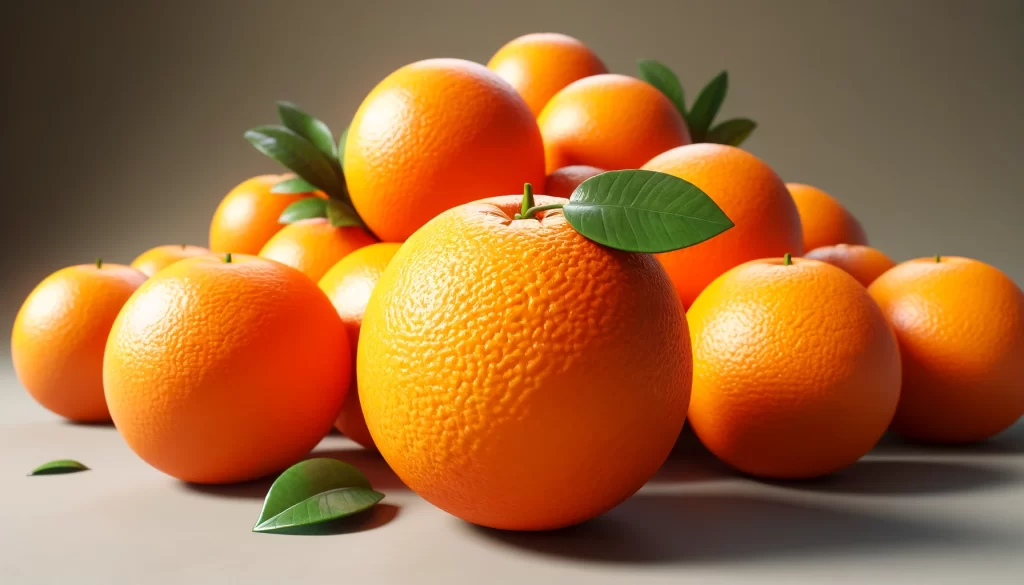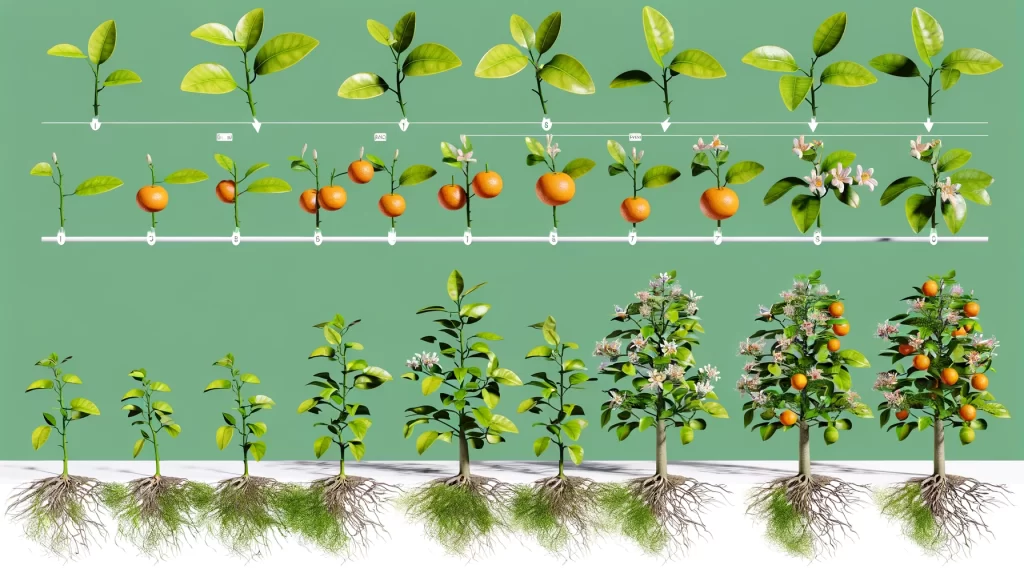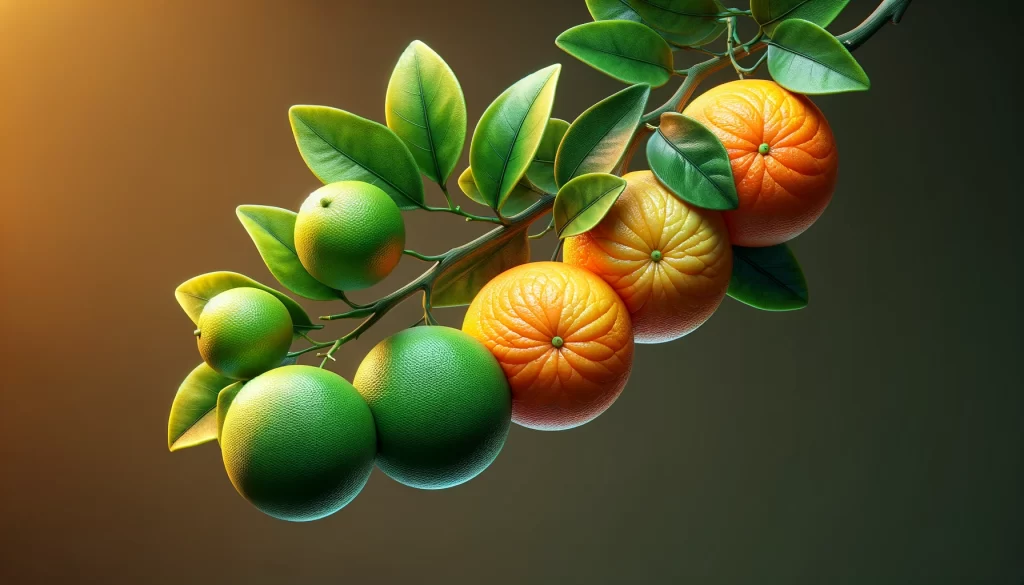Orange cultivation is an agricultural activity of great importance worldwide, both for the production of fresh fruits and for the juice processing and derivative products industry. To fully understand the life cycle and development of this crop, it is essential to understand the phenological stages through which the orange plant passes throughout its annual cycle.

These stages, ranging from vegetative awakening to fruit ripening, are marked by a series of crucial biological events and processes that influence the yield and quality of the harvest. In this description, we will explore in detail each of the phenological stages of orange cultivation, highlighting the main milestones and factors that influence its development.
Phenological Stages or Growth Phases of the Orange
Here is a list of the phenological stages of the orange, along with some of the more detailed processes and specific sub-stages that may vary.

1. Budding
- Bud development: The buds on the branches begin to swell and develop.
- Emergence of shoots: New shoots begin to emerge from the buds, indicating the start of the plant’s active growth.
2. Flowering
- Formation of flower buds: The shoots develop small flower buds that will eventually turn into flowers.
- Flower opening: The flower buds open and the flowers become visible.
- Pollination: Pollen is transferred from the stamens to the pistils, either by wind, insects, or other means.

3. Fruit Set
- Fertilization: After pollination, the fertilized flower ovules begin to develop into fruits.
- Initial fruit development: Fruits begin to form, and small growths can be observed in the fertilized flowers.
4. Fruit Growth
- Fruit expansion: The fruits continue to grow in size as internal and external tissues develop.
- Accumulation of sugars and nutrients: During this stage, the fruits accumulate sugars, acids, and other nutrients that contribute to their flavor and quality.

5. Ripening
- Changes in color and texture: The fruits change color from green to orange, and their skin becomes softer.
- Flavor development: The fruits reach their optimal maturity in terms of flavor, aroma, and sweetness.
6. Harvest
- Determining maturity: Farmers determine the optimal time for harvest based on criteria such as color, size, sugar content, and ease of separation from the plant.
- Harvest process: Mature fruits are collected manually or using specialized machinery.

These are some of the more detailed sub-stages and processes that can occur within each of the phenological stages of the orange. It is important to note that the duration and intensity of each stage may vary depending on factors such as climate, orange variety, and agricultural management practices used.
Nutrient Recommendations for Orange Cultivation
Here is a table showing general nutrient recommendations and their doses for each stage and sub-stage of orange cultivation:
| Stage/Sub-stage | Days taken | Nutrients | Recommended dose | Pest and disease management recommendations |
|---|---|---|---|---|
| Soil preparation and planting | 30-45 | Nitrogen (N), Phosphorus (P), Potassium (K) | N: 100-200 kg/ha, P: 50-100 kg/ha, K: 100-200 kg/ha | Conduct soil analysis and adjust nutrient doses based on results. Use fungicides and nematicides to prevent problems. |
| Calcium (Ca), Magnesium (Mg) | Ca: 50-100 kg/ha, Mg: 20-50 kg/ha | Maintain a monitoring program to detect pests early. | ||
| Micronutrients (such as iron, manganese, zinc) | According to soil analysis | Apply preventive treatments for soil fungi. | ||
| Vegetative development | 60-90 | Nitrogen (N), Potassium (K) | N: 150-300 kg/ha (split applications), K: 150-300 kg/ha (split applications) | Regularly inspect for mites, aphids, and other insects. Use selective insecticides. |
| Phosphorus (P) | P: 50-100 kg/ha (application at planting) | Control weeds to avoid competition for nutrients. | ||
| Calcium (Ca), Magnesium (Mg) | Ca: 50-100 kg/ha, Mg: 20-50 kg/ha | Apply foliar fungicides to prevent diseases. | ||
| Micronutrients | According to soil or foliar analysis | |||
| Flowering and fruit set | 30-45 | Nitrogen (N), Phosphorus (P), Potassium (K) | N: 100-200 kg/ha, P: 50-100 kg/ha, K: 100-200 kg/ha | Apply growth regulators to improve fruit set. Monitor and control pollinating insects. |
| Calcium (Ca), Boron (B) | Ca: 50-100 kg/ha, B: 1-2 kg/ha | Apply preventive treatments against fungal diseases. | ||
| Micronutrients | According to soil or foliar analysis | |||
| Fruit formation | 60-90 | Potassium (K), Phosphorus (P) | K: 150-300 kg/ha, P: 50-100 kg/ha | Monitor pests such as fruit flies and take necessary controls. |
| Calcium (Ca), Magnesium (Mg) | Ca: 50-100 kg/ha, Mg: 20-50 kg/ha | Use traps and baits for pest control. | ||
| Micronutrients | According to soil or foliar analysis | |||
| Fruit ripening | 30-45 | Potassium (K), Calcium (Ca) | K: 150-300 kg/ha, Ca: 50-100 kg/ha | Maintain pest and disease control until harvest. Conduct regular inspections to detect symptoms of diseases. |
| Magnesium (Mg), Phosphorus (P) | Mg: 20-50 kg/ha, P: 50-100 kg/ha | Apply post-harvest treatments to ensure fruit quality. | ||
| Micronutrients | According to soil or foliar analysis |
These recommendations are general and may vary depending on specific soil conditions, climate, orange variety, and agricultural practices used. It is recommended to perform periodic soil and foliar analyses to adjust nutrient doses precisely. Additionally, it is essential to follow local regulations and the indications of agricultural professionals for proper nutrient management in orange cultivation.
 AgronoBlog – Agriculture Blog
AgronoBlog – Agriculture Blog